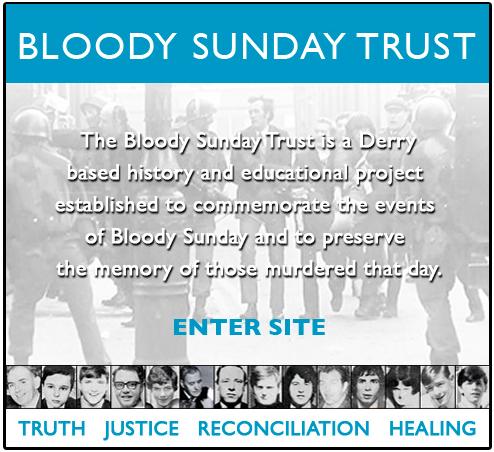Creating a Virtual Bloody Sunday
Is it possible to use virtual reality software to create a time, place and event? BBC News Online’s Dominic Casciani found out how the Bloody Sunday Inquiry has been trying to do just that.
For almost four years the Bloody Sunday Inquiry has been seeking to establish what really happened in Londonderry on 30 January, 1972, when British soldiers opened fire on civil rights protesters, killing 13.
But how do you do that when 30 years have passed, you have 1,500 witnesses and the city in which the event happened has changed?
One of the first decisions of the Saville Inquiry was to recreate the city through virtual reality technology – in effect, to try to bring back the ghost of 1972 Derry. The result is the incredibly detailed virtual reality assistant which has catapulted witnesses back to a moment frozen in their memories.
Fourteen months in the making, the package runs on huge screens at the Inquiry’s hearings in the city and records where witnesses were on the day and what they saw.
As a witness explains what they saw and heard, they can move around 360 degrees within a virtual panorama or travel to another location.
Witnesses can switch between the present day and the recreation to help keep their bearings. There are no complicated controls, keyboard or mouse.
The package, developed by multimedia experts in Northern Ireland, has won a host of awards and international attention, most notably from lawyers who think similar techniques could be used in other trials and inquiries.
The chairman of the Bloody Sunday Inquiry Lord Saville has described the tool as “spectacular”.
Malachy McDaid, senior developer with Northern Ireland’s Council for the Curriculum, Examinations and Assessments, said that his team designed the software to act as a “memory jogger”.
“Derry has changed. The Rossville flats [at the centre of the shooting on the day] have gone. Our brief was to rebuild the Bogside as it was,” said Mr McDaid.
“The other problem was that many of the witnesses might never have used a computer.
“So this was a pretty ambitious project to take on because no one had done anything on this scale before.”
At the heart of the software is about 80 “hotspots”, the key locations of Bloody Sunday, which appear as 360 present-day panoramas of the locations.
At each location, the software stitches together photographs from all angles to create a canvas which you can spin to find any view.
It gives the user the impression that they are standing on a spot and turning around.
Then, working with architectural plans and photographs, the teams recreated the same locations as they were in 1972 and brought the two eras together. This means that the user can switch between the two and a further collage of both.
Once they have got their bearings, the user can move through the landscape to each of the other “hotspots” as they tell their story.
“The witnesses can choose where they want to go, what they want to view and point to what they saw,” said Mr McDaid.
“When a witness talks about gun fire of a specific event, they can draw on the screen, rather like you see in a sports programme, and the computer records this.”


